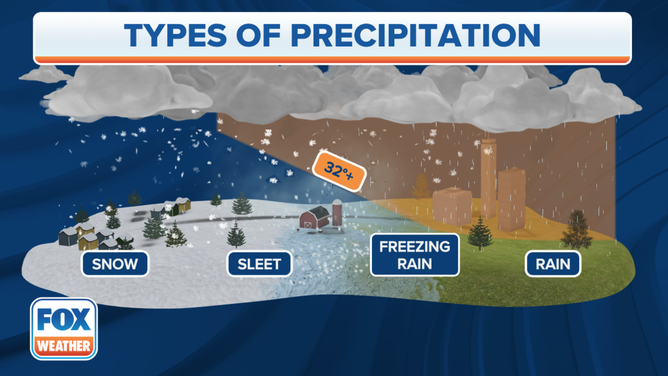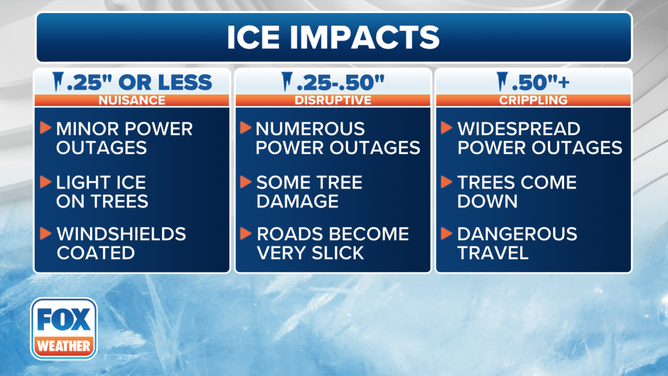How much ice is needed to knock out power, damage trees?
Ice accretions are the result of freezing rain, which forms when snow falls through a layer of air in the atmosphere with a temperature higher than 32 degrees, melting the snowflakes into raindrops.
Snow, sleet, freezing rain and hail: What's the difference?
Three of the four listed need it to be a winter storm, but one can happen year-round -- even in the summer.
When forecasters tell you an ice storm is on the way, you probably don't need anyone to remind you that roads are going to turn slippery and become dangerous to drive on. But what you might not know is whether the ice will pose other threats to life and property, such as long-duration power outages and severe tree damage.
It all depends on the amount of ice that's expected during the storm.
While it only takes a thin coating of ice to cause travel nightmares for motorists, it takes a heavier accretion of ice to damage trees and power lines, and the severity of the damage depends on how much weight is added by the ice.
Ice accretions are the result of freezing rain, which forms when snow falls through a layer of air in the atmosphere with a temperature higher than 32 degrees, melting the snowflakes into raindrops. However, the rain then moves into a shallow layer of subfreezing air near the ground, causing the precipitation to freeze on contact with roads, sidewalks, trees, power lines, cars and other objects.
SNOW, SLEET, FREEZING RAIN AND HAIL: WHAT'S THE DIFFERENCE?

(FOX Weather)
Here's a breakdown of what types of impacts and damage you can expect from different accretion ranges of ice.
Less than 0.25 inches
Less than one-quarter inch of ice is generally considered a nuisance-type event.
Impacts include minor power outages, light accumulations of ice on trees and car windshields coated in ice.
However, even with only a light glaze of ice, driving can still be very dangerous because of slippery roads.
7 THINGS TO KNOW ABOUT ICE STORMS

(FOX Weather)
Between 0.25 and 0.50 inches
Between one-quarter and one-half inch of ice is typically a disruptive ice storm.
Numerous power outages, damage to trees and power lines, and, of course, very slick driving conditions can occur.
DON'T WAIT: NOW IS THE TIME TO PREPARE FOR A POWER OUTAGE
More than 0.50 inches
More than one-half inch of ice is considered a crippling ice storm.
This much ice can cause severe damage to trees and power lines, often resulting in numerous downed trees and widespread power outages that might last for days.

FILE - Ice glazes tree limbs in Myersville, Maryland on December 15, 2022. Freezing rain fell on parts of the area as winter sets in.
(Ricky Carioti/The Washington Post / Getty Images)
The most destructive ice storms produce ice amounts of an inch or greater.
